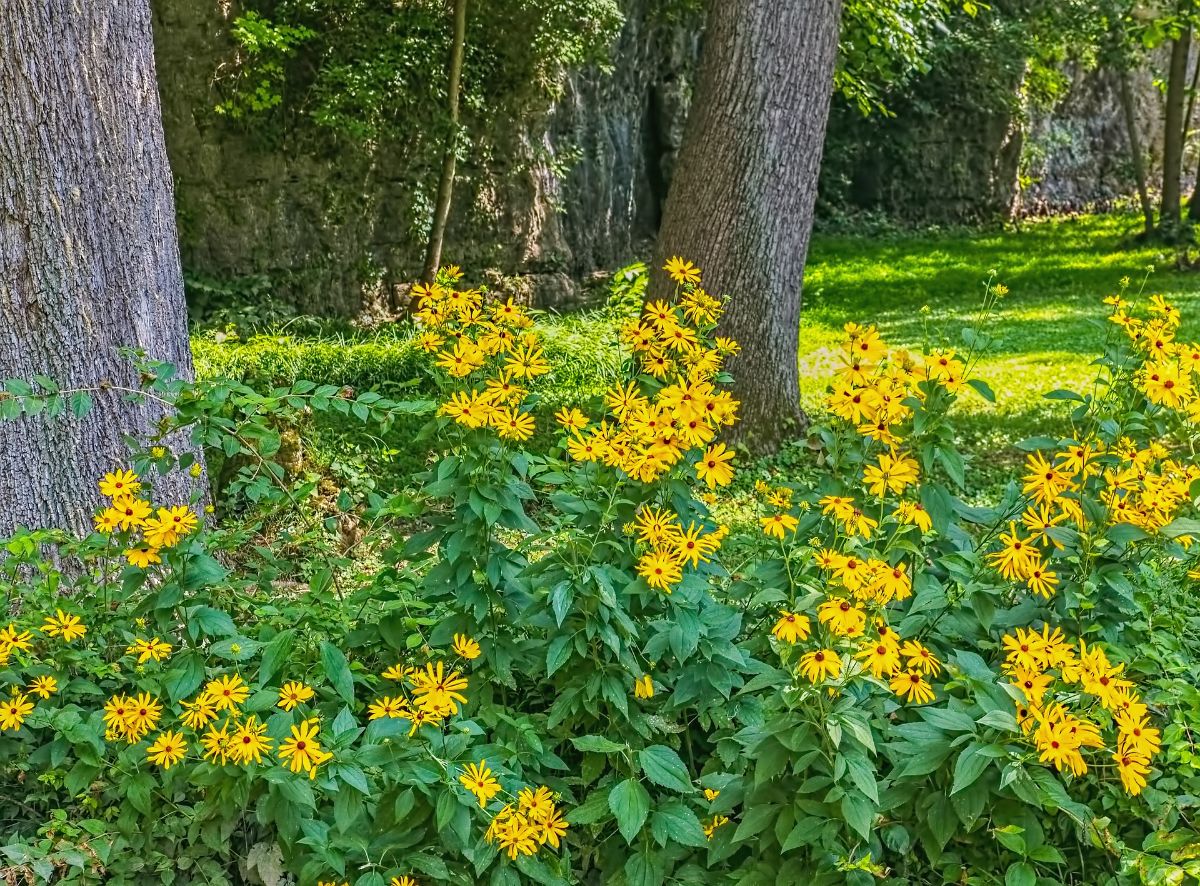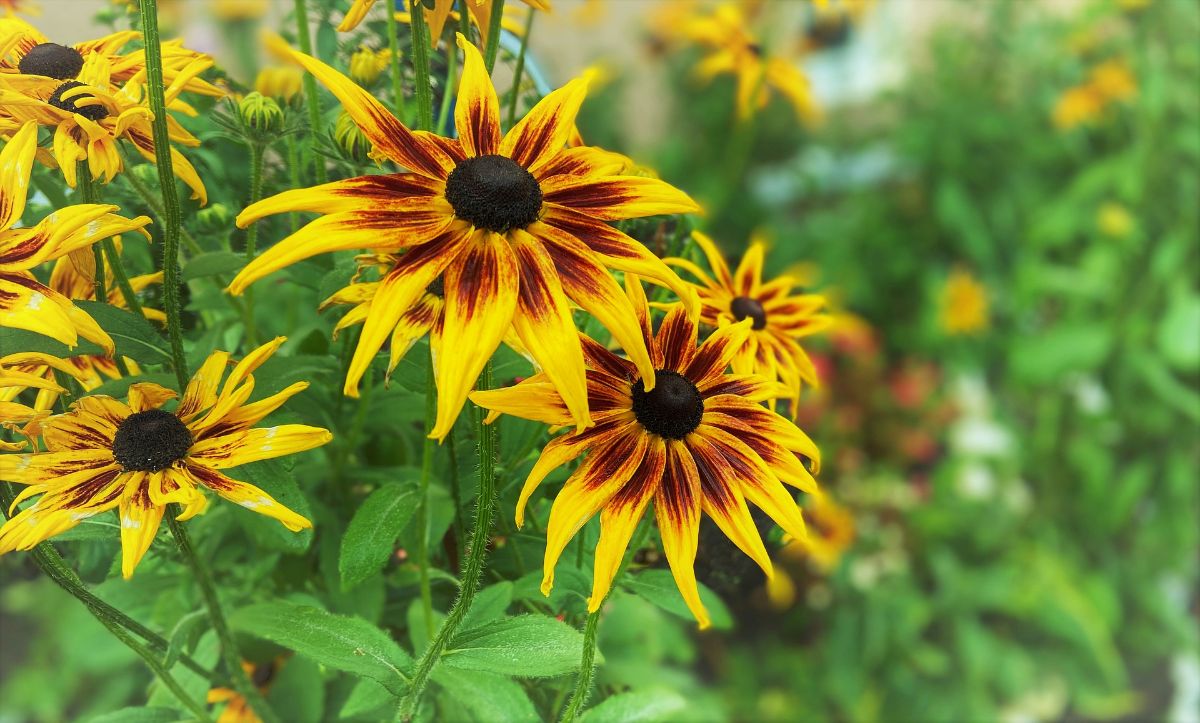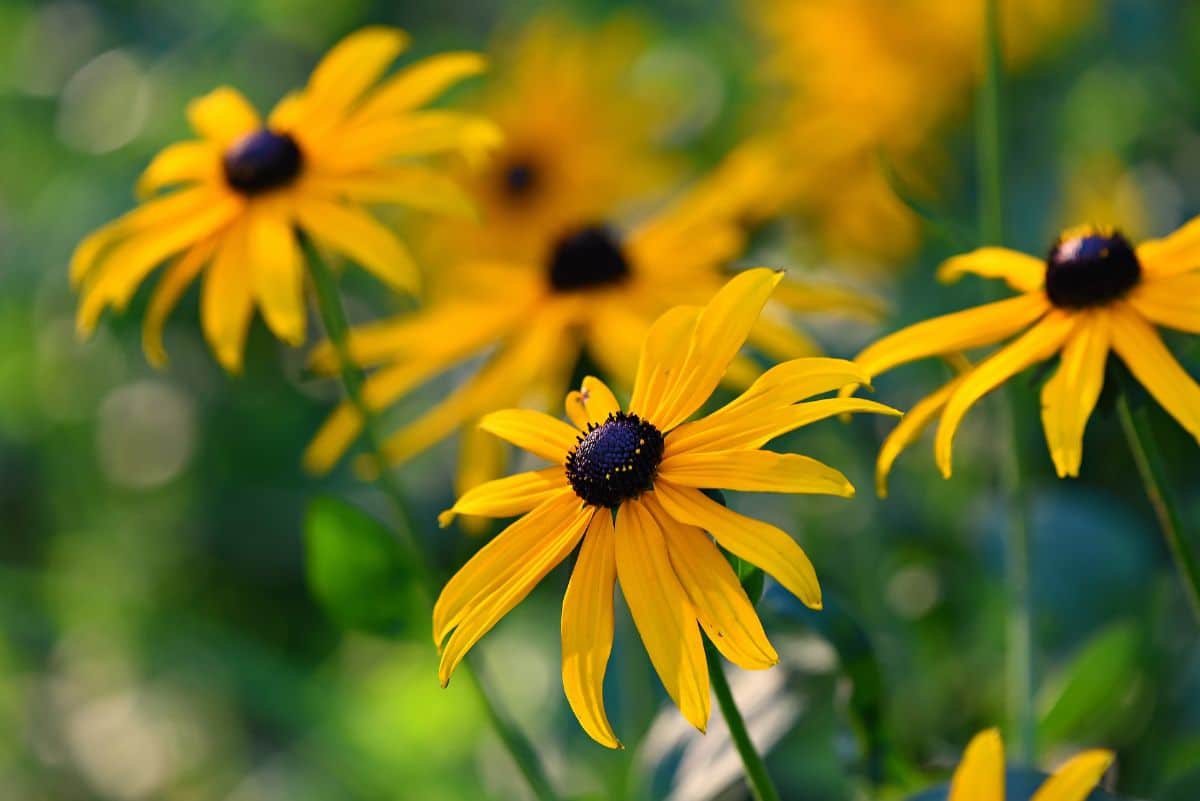
Each plant has a series of needs that must be covered. Most of them are very similar, especially if they come from the same place or continent, while others are more specific. Therefore, this time we want to talk to you about the rudbeckia, the care you need and what it is like.
Do you know what a Rudbeckia is? What if we tell you that it comes from sunflower family and its flowers are like those of daisies? Discover everything you need to know about this plant.
Characteristics of the Rudbeckia

Rudbeckia is also known as black-eyed susans, a peculiar name for a plant; and coneflower. It is characterized by being a straight-growing herbaceous plant that can reach 90 cm in height. The most striking thing about this are the bearing, since it looks like sunflowers, and the flowers, which give an air to the daisies. These are yellow or orange and in the center there is a kind of black ball.
It comes from the United States and Canada, where it grows mainly in prairies, forest clearings, dry savannas, etc. In fact, in Maryland it has been the official flower since 1918.
Rudbeckia care

Having a Rudbeckia is not difficult, far from it, and it does not need to be very aware of it since it is very resistant. However, it is true that Rudbeckia has some care that must be provided appropriately so that it does not weaken. We talk about them.
Location
In the case of location, Rudbeckia doesn't need much. Just want a place that is in full sun. He loves spending hours and hours in the sun! Of course, if it is in a warm climate, it would be better to find a place in semi-shade to prevent sun exposure from burning the flower petals.
Temperature
In Rudbeckia, care with the temperature should not matter much to you until winter arrives. And more specifically frost.
It tolerates high temperatures very well but not frost. They must be protected because they can reduce the health of the plant.
That does not mean that if it is cold you already have to put it inside the house or provide it with a constant temperature, far from it. It can withstand the cold, and even mild frosts, but if the temperature drops too low that is when you need to take action.
Earth
The Rudbeckia needs a soil that is clayey and with organic matter. Although it must be one that withstands humidity, at the same time it must have good drainage, since this plant does not like to have accumulated water.
Therefore, when planting Rudbeckia, one of the care that you should provide is to fill that hole before with a little compost, manure or another type of organic soil that gives it a base of organic matter to help it grow a lot. better.
Once planted, if you add a little compost annually or biannually, it will thank you.
Irrigation
Irrigation is one of the Rudbeckia cares in which you have to be very careful. And it is the most important of all of them, and the one that can affect the health of the plant.
To begin with, you should know that Rudbeckia is a plant that needs to have moist soil, not waterlogged. That is why it must be watered frequently. But not always. Only in the spring, summer and fall months.
Normally, as temperatures drop, watering must also be decreased to the point that practically the entire winter is spent without irrigation.
It is important that when you pour water, you always do it on the ground, since if you add to the leaves or flowers you can cause fungal diseases.
Flowering
Unlike other flowering plants, in this case Rudbeckia will not bloom in spring, like almost all, but it does in the middle of summer and it keeps blooming until the same fall.
It is for this reason that the subscriber is done in a different way.
Subscriber

Let's talk about the subscriber. Among the care of Rudbeckia you must bear in mind that, due to its flowering, it is important that it is fertilized for a longer time. That is, you should start at the end of spring and continue to fertilize until fall, to give it strength.
The best in this case would be a mineral fertilizer. You must follow the manufacturer's recommendation (although if you miss it, it is not bad), and add it to irrigation every 15 days approximately.
Pruning
Being a herbaceous plant, Rudbeckia does not need drastic pruning. Yes, you will have to watch out for those branches that remain dry or weak in order to sanitize it so that it can continue to multiply.
But beyond that it does not require pruning as such, but rather maintenance so that it can be oxygenated and have all its branches healthy.
Also, you have to take into account that, when winter comes, the plant itself withers, and you only have to protect the root part, nothing more. In spring, if you have done well, you will see that it begins to sprout again and returns to the state in which you had it in summer.
Transplant
As for the transplant, if it is in the garden soil, for example, it is not necessary that you transplant it, although it would be good if you added a little new land to help pay for what may have been lost due to irrigation.
If you have it in a pot, then it would be advisable that, at least every 2-3 years, you change it, even if it is not a pot, but a soil since the nutrients in it can be depleted.
Plagues and diseases
Due to its high strength and strength, the usual pests and diseases do not usually affect you, With what you have an advantage with this plant, and that is that you would not have to worry that it would die from this problem.
Now, we do have to take into account the irrigation, since if we go overboard, the roots can weaken, rot and kill the Rudbeckia.
Multiplication
The last thing we have to tell you about is the multiplication of this plant. This can be carried out through seeds. You can pick them from summer and fall but, until spring, it is not a good idea to plant them.
Of course, keep in mind that there must be a separation between seeds of at least 50 cm since each specimen needs its space.
To have more luck and that all of them come out, a little expert trick is put them at a constant temperature of 15-16 degrees. That way, in just 2-3 weeks you will have the first shoots.
As you can see, Rudbeckia does not require much care. Would you have this plant in your garden or terrace? Have you had any doubts? Tell us and we will try to help you.